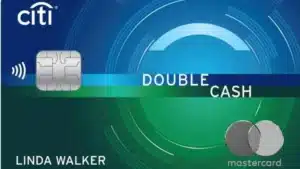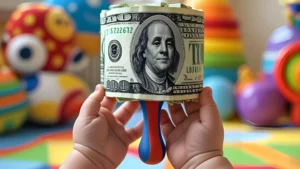Imagine boosting your credit score by 100 points in just six months. For one in four people, this is real. A secured card is a great way to start building credit.
It’s a big step for those with little credit or no credit at all. With the right approach, it can change your financial life.
Getting a solid credit score can seem hard, but secured cards help. They’re a way to start and learn about credit. Some cards even let you start with a deposit under $50.
Timely payments are very important, making up about 35% of your score. Keeping your credit use under 30% is also key. The deposit, usually $200 to $500, is refundable if you use the card wisely.
Secured cards report to all three major credit bureaus. This means every payment you make helps improve your credit. They’re a chance to show you’re responsible with money.
After a year, nearly 38% of users get an unsecured card. This shows the power of using a secured card wisely. It’s a step towards better financial health.
Understanding Secured Credit Cards
Starting to fix your finances or build your credit can feel tough. Secured credit cards are made to help in these situations. They are great for those trying to improve their credit score.
What is a Secured Credit Card?
Secured credit cards help people fix or start their credit. You need to put down a deposit to use one. This deposit is like your credit limit, making it safe for the bank.
About 36% of adults have low credit scores. This makes them good candidates for secured cards.
How Do Secured Credit Cards Work?
Secured credit cards work like regular cards, but with a deposit. You put in money, and that’s your credit limit. This way, banks feel safe, and you can get credit.
Using your card wisely is key. Pay on time and keep balances low. This helps your credit score, which 70% of users see improve.
The Role of Security Deposits
The deposit is a safety measure for the bank and a promise from you. It sets your credit limit. It’s kept safe until you get a regular card or close it.
This deposit lets people with low credit get help. Using your card well can lead to better credit options later.
Secured credit cards are useful, mainly for those starting or fixing their credit. With careful use, they can lead to a better financial future. They are both tools and learning aids.
How to Choose the Best Secured Credit Card for Rebuilding Credit
Choosing the right secured credit card is key when you’re fixing or improving your credit score. The best card can help your financial health and lead to a stable future. Let’s look at important things to think about when making this choice.
Reporting to Credit Bureaus
Make sure the card reports to Experian, TransUnion, and Equifax. This way, every payment you make helps your credit score. For example, the Discover it® Secured Credit Card reports to all major bureaus, making it great for improving your score.
Evaluating Fees and Interest Rates
Stay away from cards with high fees or interest rates. Some cards may look good but cost too much. For instance, the First Progress Platinum Prestige Mastercard® Secured Credit Card has a $49 annual fee but a low APR of 14.24% (Variable), saving you money over time.
Opportunities for Graduation to Unsecured Cards
Look for cards that let you move to an unsecured card. This shows you’re responsible with money. Cards like the Capital One Platinum Secured Credit Card might offer a higher credit limit or switch to an unsecured card without extra fees.
Choosing the right card means considering your current and future financial needs. This choice helps rebuild your credit and improves your financial health.
The Process to Build Credit Secured Card
Learning to use a secured credit card to build credit is simple. It involves a few key steps that can really boost your score. Let me show you how to do it effectively.
- Choosing the Right Card: First, pick a card that reports to Equifax, TransUnion, and Experian. This is important because making payments on time helps you build credit fast.
- Maintaining Low Credit Utilization: Keep your credit use below 30%. For example, if your limit is $300, spend less than $100. This shows you can handle your credit well.
- Timely Payments: Being on time with payments is key, making up 35% of your FICO score. Use automatic payments to avoid late fees, which hurt your credit score.
- Review Fees and Interest Rates: Know the costs of secured cards, like higher interest and fees. It’s important to manage these costs while using the card wisely.
- Monitoring Credit Score Regularly: Watch your score and report closely. Many banks offer free services to check your credit, helping you see your progress.
- Graduation to Unsecured Cards: If you show you can handle your credit well, you might get an unsecured card. These cards often have better benefits and lower rates.
These steps are a solid plan for using a secured credit card to build credit. Each step you take helps build a strong credit report. This improves your financial health and opens doors to more financial opportunities.
Maximizing the Benefits of Your Secured Credit Card
Using secured credit cards wisely is key to my financial plan. By knowing and using the benefits, I can build credit. Let’s look at how to make the most of these advantages.
Maintaining Low Balances
Keeping balances low is important for my credit score. I aim to use less than 30% of my credit limit. For example, on a $300 limit card, I try to stay under $90.
Making Payments on Time
Payment history is a big part of my credit score, making up 35%. I use automatic payments to avoid late fees. This keeps my credit score improving.
Monitoring Your Credit Score Regularly
I regularly check my credit reports. This lets me see how my credit is growing and spot errors. Thanks to free weekly reports from annualcreditreport.com, it’s easy to stay on top of my credit.
Getting from a secured to an unsecured card is a big step. It takes 6 to 12 months of good credit use. By following these steps, I keep my finances healthy and prepare for future credit needs.
Conclusion
Starting to build credit with a secured card is a smart move. It helps you create a strong financial base. These cards need a deposit, which is like a safety net for the issuer.
This setup makes them easier to get than regular credit cards. It’s great for people who want to improve their credit score.
Using a secured card right means more than just paying on time. It’s about managing your money well and using the card wisely. Keeping your balance low and paying more than the minimum helps your credit score grow.
It’s also key to make sure your issuer reports to all three big credit agencies. This can really help improve your credit. Being careful with your spending and payments can lead to better credit cards later on.
Secured credit cards are more than just a tool; they show you’re serious about improving your finances. Choosing the right card and being responsible can change your credit score in a year or so. This opens doors to better financial products.
But remember, closing a secured card can hurt your score, at least for a little while. With the right approach and careful credit use, secured cards can help you not just fix your credit but keep it strong.







